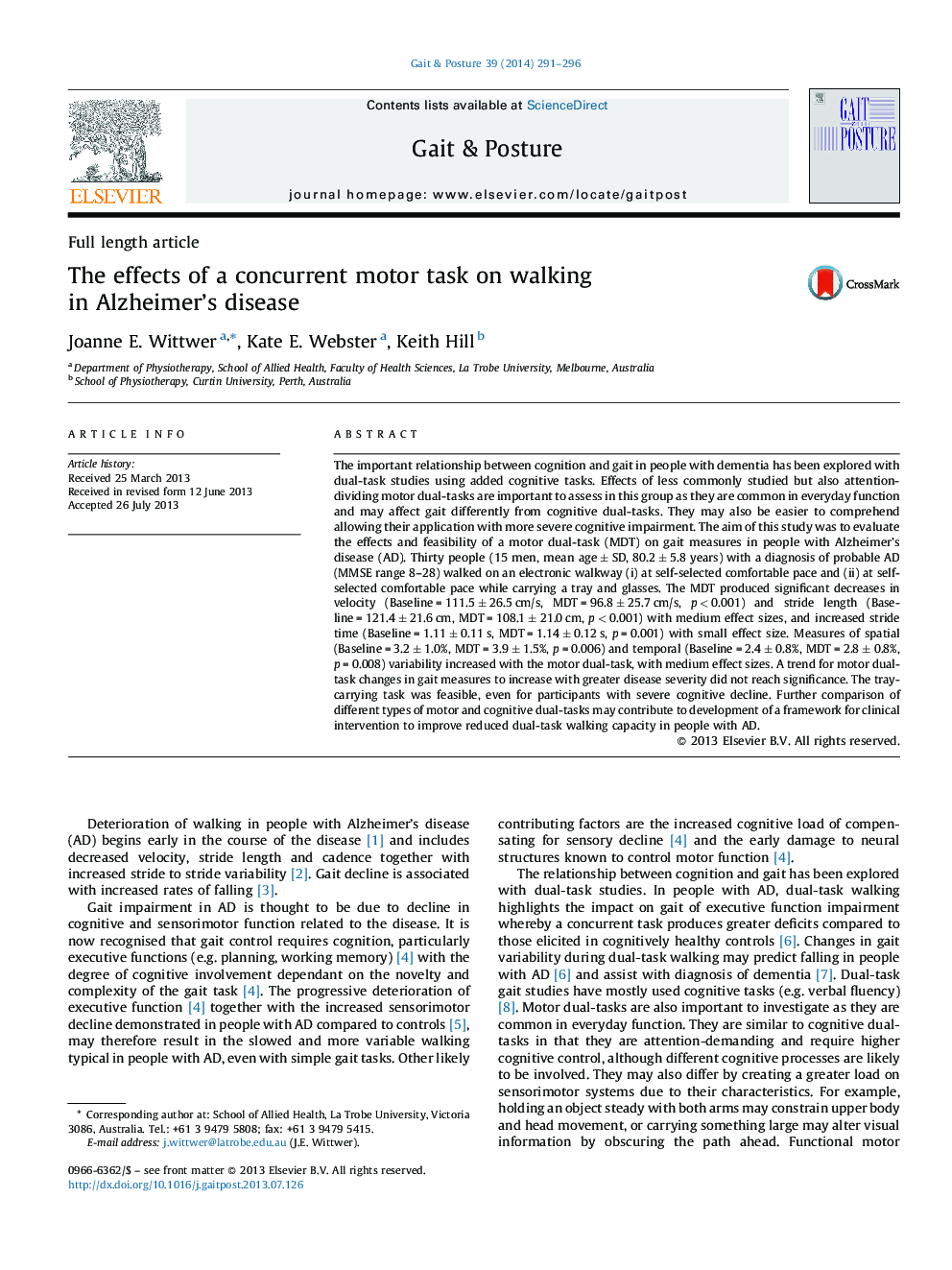| Article ID | Journal | Published Year | Pages | File Type |
|---|---|---|---|---|
| 6207007 | Gait & Posture | 2014 | 6 Pages |
â¢We assess the effects of a motor dual-task on gait measures of Alzheimer participants.â¢Carrying a tray and empty glasses produced slowed and more variable gait measures.â¢Decrease in velocity exceeded a minimum clinically detectable change score.â¢Motor dual task effects were greater on spatial than temporal variables.â¢The added motor task was feasible in people with moderate to severe cognitive impairment.
The important relationship between cognition and gait in people with dementia has been explored with dual-task studies using added cognitive tasks. Effects of less commonly studied but also attention-dividing motor dual-tasks are important to assess in this group as they are common in everyday function and may affect gait differently from cognitive dual-tasks. They may also be easier to comprehend allowing their application with more severe cognitive impairment. The aim of this study was to evaluate the effects and feasibility of a motor dual-task (MDT) on gait measures in people with Alzheimer's disease (AD). Thirty people (15 men, mean age ± SD, 80.2 ± 5.8 years) with a diagnosis of probable AD (MMSE range 8-28) walked on an electronic walkway (i) at self-selected comfortable pace and (ii) at self-selected comfortable pace while carrying a tray and glasses. The MDT produced significant decreases in velocity (Baseline = 111.5 ± 26.5 cm/s, MDT = 96.8 ± 25.7 cm/s, p < 0.001) and stride length (Baseline = 121.4 ± 21.6 cm, MDT = 108.1 ± 21.0 cm, p < 0.001) with medium effect sizes, and increased stride time (Baseline = 1.11 ± 0.11 s, MDT = 1.14 ± 0.12 s, p = 0.001) with small effect size. Measures of spatial (Baseline = 3.2 ± 1.0%, MDT = 3.9 ± 1.5%, p = 0.006) and temporal (Baseline = 2.4 ± 0.8%, MDT = 2.8 ± 0.8%, p = 0.008) variability increased with the motor dual-task, with medium effect sizes. A trend for motor dual-task changes in gait measures to increase with greater disease severity did not reach significance. The tray-carrying task was feasible, even for participants with severe cognitive decline. Further comparison of different types of motor and cognitive dual-tasks may contribute to development of a framework for clinical intervention to improve reduced dual-task walking capacity in people with AD.
